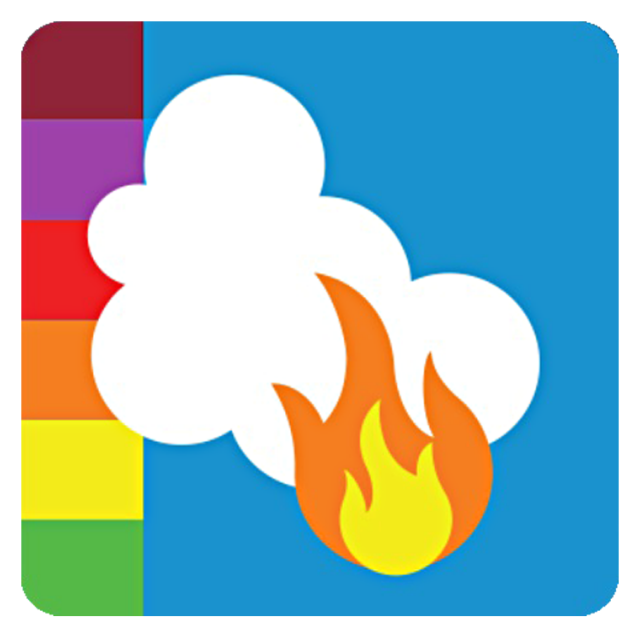Smoke Sense Adds Spanish-Speaking Version to Reach Those Impacted by Wildfire Smoke
Published December 10, 2019
Note: Starting on December 8, 2024, the Smoke Sense app will be unavailable for use. Please visit AirNow for the latest wildfire smoke and air quality information, and EPA's Smoke Ready Toolbox for Wildfires to find resources to stay healthy during wildfire events.

Exposure to wildfire smoke is a community health issue that has been gaining the attention of public health professionals and organizations, especially in states where fires are frequently large and intense. Wildfire smoke has significant health implications for those near the fire, as well as for those living farther downwind. Researchers want to know what kind of actions people take in response to smoke exposure and what motivates them to reduce their exposure.
To help answer these questions, EPA is conducting a research project called Smoke Sense to understand the health effects of wildland fire smoke and identify effective risk communication strategies. Citizen scientists can participate in the research using a mobile application—the Smoke Sense App.
The app has been available since 2017 and has grown to 27,000 users. This year, a Spanish version has been added to encourage participation by Spanish-speaking people who may be impacted by smoke from fires.
Another addition is the creation of the online Smoke Sense Data Visualization Tool, a set of web-based interactive modules that enable users to look at data collected from the app. With the tool, a user can view graphics showing the latest number of participants, where participants report smoke and health observations, how people are engaging with Smoke Sense, physical and behavioral responses to smoke, and participants’ perspectives on the value of taking actions to be prepared during future smoke events.
For those new to Smoke Sense, users can access current and forecasted air quality conditions, a map showing current fire locations and smoke plumes, a learning module about the health impacts of air pollution from fires, and a feature tool to allow reporting of personal health symptoms and smoke observations. The data collected by the Smoke Sense App includes individual-level anonymous demographics and health reports like age and pre-existing cardiovascular or pulmonary conditions, weekly reports of smoke exposure and concurrent health symptoms, as well as perspectives on health communication.
Steps to protect health during wildland fire smoke are available in the app and on Airnow.gov and the Smoke Ready Toolbox.
On the science side, the goal is to learn how research studies that use a citizen science and crowdsourcing design can be developed to support rigorous analysis of complex research questions. Smoke Sense aims to address questions that are difficult to answer using more conventional approaches to data collection because of the immediacy of the event and the timeline of launching a research study in response to that event.
“Smoke Sense engages users to make a personal connection between environmental factors and their health,’’ says EPA’s Dr. Ana Rappold, lead scientist for the Smoke Sense Project. “The app is being studied for its ability to serve as an intervention strategy to reduce health impacts from wildland fire smoke.”
